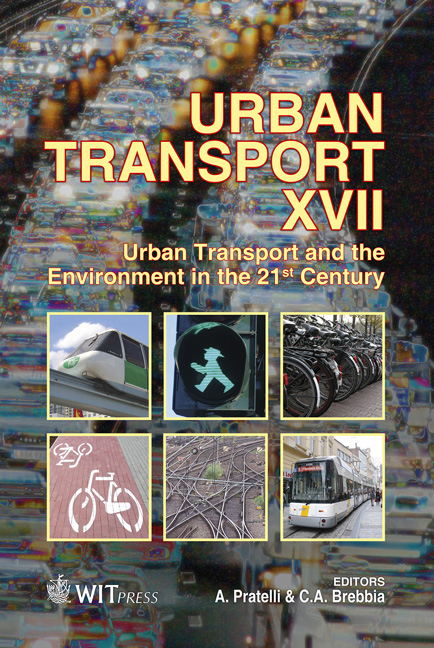A Method For Pedestrian Crossing Risk Assessment
Price
Free (open access)
Transaction
Volume
116
Pages
12
Page Range
587 - 598
Published
2011
Size
3,639 kb
Paper DOI
10.2495/UT110501
Copyright
WIT Press
Author(s)
D. Antov, T. Rõivas, I. Antso & P. Sürje
Abstract
Pedestrian crossings are contributing to important risk sites, especially at urban traffic environments. For example, in Tallinn, the capital of Estonia during the period of 2006–2009, one of three injury accidents took place at non-signalized pedestrian crossings. But it is still complicated to rank crossings due to the number of registered road accidents, because of some main reasons, such as (i) It is doubtful to wait for accidents to happen in order to take measures for their removal, and; (ii) Often a statistical inadequacy causes problems for ranking, as the number of registered accidents is often too small for comprehensive analysis. Thus, there is a big need for indirect risk ranking, in order to find the most reliable measures for safety improvement of pedestrian crossings. An additional problem occurs when the road accident took place close to a crossing, but not exactly at a crossing. Then the accident, even connected to the crossing site, might fall out of traditional statistics, thus registered under a different accident type. The project initiated in Tallinn had two main goals: Working out the method for road accidents mapping at the vicinity of a crossing. Developing the indirect method for the potential risk estimation of pedestrian crossing, using the number of potential risk factors, including the design (e.g. roadway width and layout), behavioural (e.g. speed) and others. Keywords: road safety, risk assessment, pedestrian crossings, road safety inspection.
Keywords
road safety, risk assessment, pedestrian crossings, road safety inspection





